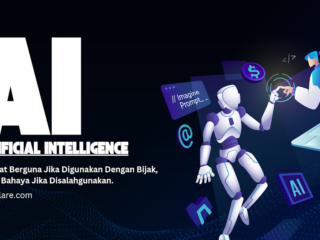The Friendly Guide to Cybersecurity: Breaking Down Complex Lingo and Jargon for Everyone

In today’s digital age, cybersecurity has become a crucial topic for individuals and organizations alike. As we navigate through a world increasingly reliant on technology, understanding the intricacies of cybersecurity is more important than ever. However, the jargon and technical language often associated with this field can be daunting for many. This article aims to demystify cybersecurity by breaking down complex terminology into simple, relatable concepts. Whether you’re a tech novice or someone looking to brush up on your cybersecurity knowledge, this guide will provide you with the essential information you need to feel empowered in the digital landscape.
1. Understanding Cybersecurity: The Basics
Cybersecurity, at its core, refers to the practice of protecting systems, networks, and programs from digital attacks. These attacks typically aim to access, change, or destroy sensitive information, disrupt services, or extort money from users. The term encompasses a wide range of practices, technologies, and processes designed to safeguard computers and networks. To truly appreciate the importance of cybersecurity, one must first understand the various threats that exist in the digital realm.
One of the most prevalent threats is malware, which is a broad category that includes viruses, worms, trojan horses, and ransomware. Malware is designed to infiltrate and damage computers or networks, often without the user’s knowledge. For instance, ransomware encrypts files on a victim’s computer and demands payment for their release, causing significant disruption and financial loss. Understanding these threats is the first step in recognizing the need for robust cybersecurity measures.
Another critical aspect of cybersecurity is the concept of the “attack surface.” This term refers to the total number of points (or “attack vectors”) in a given computing environment that an unauthorized user can exploit to enter a system. The larger the attack surface, the more vulnerable a system is to potential breaches. This is why businesses and individuals must continuously assess their digital environments and work to minimize their attack surfaces through various security measures.
Lastly, cybersecurity is not solely the responsibility of IT professionals. Everyone who uses technology, from casual internet users to corporate executives, plays a role in maintaining cybersecurity. Simple practices such as using strong, unique passwords, being cautious of suspicious emails, and regularly updating software can significantly enhance one’s security posture. By fostering a culture of cybersecurity awareness, individuals and organizations can collectively reduce the risk of cyber threats.
2. Common Cyber Threats and Their Implications
In the realm of cybersecurity, understanding common threats is essential for developing effective defenses. One of the most notorious types of cyber threats is phishing, a technique used by cybercriminals to trick individuals into revealing sensitive information, such as passwords or credit card numbers. Phishing attacks often come in the form of deceptive emails or messages that appear legitimate. Users who fall for these scams may unknowingly provide access to their accounts, leading to identity theft or financial loss.
Another significant threat is Distributed Denial of Service (DDoS) attacks, where multiple compromised systems are used to flood a target with traffic, overwhelming its resources and rendering it inaccessible. This type of attack can severely disrupt business operations, leading to loss of revenue and damage to reputation. Understanding the implications of DDoS attacks highlights the importance of having robust defenses in place, such as traffic filtering and redundancy measures.
Moreover, insider threats pose a unique challenge in the cybersecurity landscape. These threats come from individuals within an organization who misuse their access to sensitive information, whether intentionally or unintentionally. Insider threats can be particularly difficult to detect and mitigate, as the perpetrators often have legitimate access to systems. Organizations must implement strict access controls and monitoring measures to minimize the risk of insider threats.
Finally, the rise of the Internet of Things (IoT) has introduced new vulnerabilities into the cybersecurity landscape. With the proliferation of smart devices, each connected device represents a potential entry point for cybercriminals. Many IoT devices lack robust security features, making them easy targets for attacks. Understanding the implications of IoT vulnerabilities is crucial for both consumers and organizations, as they must take proactive steps to secure their devices and networks.
3. The Role of Encryption in Cybersecurity
Encryption is a fundamental concept in cybersecurity that plays a vital role in protecting sensitive information. At its core, encryption is the process of converting data into a coded format that can only be read by someone with the appropriate key or password. This ensures that even if data is intercepted during transmission, it remains unreadable to unauthorized parties. Encryption is used in various applications, from securing online transactions to protecting sensitive emails.
One of the most common forms of encryption is Secure Sockets Layer (SSL) or its successor, Transport Layer Security (TLS). These protocols establish a secure connection between a web server and a browser, ensuring that any data exchanged remains private. Users can identify secure websites by looking for “https://” in the URL, indicating that their connection is encrypted. Understanding the importance of SSL/TLS can help users make informed decisions about the websites they interact with.
Another essential aspect of encryption is end-to-end encryption (E2EE), which ensures that data is encrypted on the sender’s device and only decrypted on the recipient’s device. This prevents intermediaries, including service providers, from accessing the content of the communication. Messaging apps like Signal and WhatsApp utilize E2EE to provide users with a higher level of privacy and security. By understanding how E2EE works, individuals can choose communication tools that prioritize their privacy.
However, while encryption is a powerful tool for protecting data, it is not foolproof. Cybercriminals are continually developing new methods to bypass encryption, and there are instances where law enforcement agencies seek access to encrypted data for legitimate reasons. This ongoing debate highlights the need for a balanced approach to encryption, where security and privacy are weighed against law enforcement needs. Understanding the nuances of encryption can help users navigate these complex issues and make informed choices about their digital security.
4. Best Practices for Cyber Hygiene
Cyber hygiene refers to the practices and steps that users take to maintain the health and security of their digital devices and online accounts. Just as personal hygiene is essential for physical health, cyber hygiene is crucial for protecting oneself from cyber threats. Adopting good cyber hygiene practices can significantly reduce the risk of falling victim to cyber attacks.
One of the most fundamental practices is the use of strong, unique passwords for each account. A strong password typically contains a mix of uppercase and lowercase letters, numbers, and special characters. Additionally, using a password manager can help users keep track of their passwords securely. This practice not only enhances security but also alleviates the burden of remembering multiple complex passwords.
Another critical aspect of cyber hygiene is regularly updating software and applications. Software updates often include security patches that address vulnerabilities discovered since the last update. Failing to update software can leave devices exposed to known threats. Users should enable automatic updates whenever possible and make it a habit to check for updates on a regular basis.
Moreover, being cautious about the information shared online is essential for maintaining cyber hygiene. Users should be mindful of the personal information they provide on social media and other platforms, as cybercriminals often use this information for social engineering attacks. By limiting the amount of personal information shared online, individuals can reduce their risk of becoming targets for cyber threats.
Lastly, regular backups of important data are a crucial component of cyber hygiene. In the event of a ransomware attack or hardware failure, having a backup ensures that data can be restored without significant loss. Users should implement a backup strategy that includes both local and cloud-based solutions to provide redundancy and security for their critical information.
5. The Importance of Cybersecurity Awareness Training
As cyber threats continue to evolve, the importance of cybersecurity awareness training cannot be overstated. Organizations that invest in training their employees on cybersecurity best practices significantly reduce their risk of falling victim to cyber attacks. Awareness training equips employees with the knowledge and skills necessary to recognize and respond to potential threats effectively.
One of the primary objectives of cybersecurity awareness training is to educate employees about common threats, such as phishing and social engineering. By understanding how these attacks work, employees can become more vigilant and less likely to fall victim to scams. Training sessions often include real-life examples and simulations that illustrate the tactics used by cybercriminals, making the information more relatable and memorable.
Moreover, cybersecurity awareness training fosters a culture of security within an organization. When employees are aware of the importance of cybersecurity, they are more likely to take proactive measures to protect sensitive information. This collective effort can create a more secure environment, as employees become the first line of defense against potential threats.
Additionally, ongoing training is essential, as the cybersecurity landscape is constantly changing. New threats emerge regularly, and techniques that were effective a few months ago may no longer be relevant. Organizations should implement regular training sessions and updates to ensure that employees stay informed about the latest threats and best practices. By prioritizing cybersecurity awareness, organizations can empower their employees to be proactive in safeguarding their digital assets.
6. The Future of Cybersecurity: Trends and Innovations
As technology continues to advance, so too does the field of cybersecurity. Emerging trends and innovations are shaping the future of cybersecurity, making it essential for individuals and organizations to stay informed about these developments. One of the most significant trends is the increasing adoption of artificial intelligence (AI) and machine learning in cybersecurity solutions. These technologies can analyze vast amounts of data to identify patterns and anomalies, enabling faster detection and response to potential threats.
Another trend is the rise of zero trust security models, which operate on the principle of “never trust, always verify.” In this approach, no user or device is automatically trusted, regardless of whether they are inside or outside the network perimeter. This model emphasizes continuous verification and authentication, reducing the risk of unauthorized access. As remote work becomes more prevalent, zero trust security is gaining traction as a robust framework for protecting sensitive information.
Furthermore, the growing importance of data privacy regulations, such as the General Data Protection Regulation (GDPR) and the California Consumer Privacy Act (CCPA), is driving organizations to prioritize cybersecurity measures. Compliance with these regulations requires organizations to implement strict data protection protocols, which in turn enhances their overall cybersecurity posture. Understanding the implications of these regulations is crucial for organizations striving to protect their customers’ data and maintain their trust.
Finally, the increasing interconnectedness of devices through the Internet of Things (IoT) presents both opportunities and challenges for cybersecurity. While IoT devices can enhance efficiency and convenience, they also introduce new vulnerabilities that cybercriminals can exploit. As the number of connected devices continues to grow, cybersecurity solutions must evolve to address these unique challenges. Staying informed about these trends and innovations will empower individuals and organizations to adapt their cybersecurity strategies effectively.
Conclusion
In conclusion, cybersecurity is an essential aspect of our digital lives that requires ongoing attention and understanding. By breaking down complex jargon and terminology, we can empower individuals to take proactive steps in protecting themselves and their organizations from cyber threats. From understanding common threats to implementing best practices for cyber hygiene, everyone has a role to play in maintaining a secure digital environment. As technology continues to evolve, staying informed about emerging trends and innovations will be crucial for navigating the ever-changing landscape of cybersecurity.








No Comments